Abstract
The intravenous injection of 0.05 to 2.5 mg. of morphine reduced the response of the nictitating membrane in the cat to pre- and post-ganglionic stimulation. This inhibitory action of morphine was due neither to inhibition of ganglionic transmission nor to a depressant action on the smooth muscle of the nictitating membrane. It is suggested that morphine inhibits the release of the sympathetic transmitter from the postganglionic nerve endings.
Small amounts of morphine (5 to 20 μg.) injected intravenously reduced or abolished the contraction of the nictitating membrane due to the injection of histamine, pilocarpine and 5-HT into the arterial blood supply of the superior cervical ganglion. This inhibitory action of morphine was due to an action on the ganglion cells, since such small amounts of morphine did not reduce the response of the nictitating membrane to postganglionic stimulation. Similar amounts of morphine did not abolish the stimulation of the ganglion by nicotine, tetramethylammonium and potassium chloride.
The results provide further evidence for the view that histamine, pilocarpine, and 5-hydroxytryptamine have no “nicotine-like” properties but act on receptors of the ganglion cells different from the acetylcholine receptors.
Full text
PDF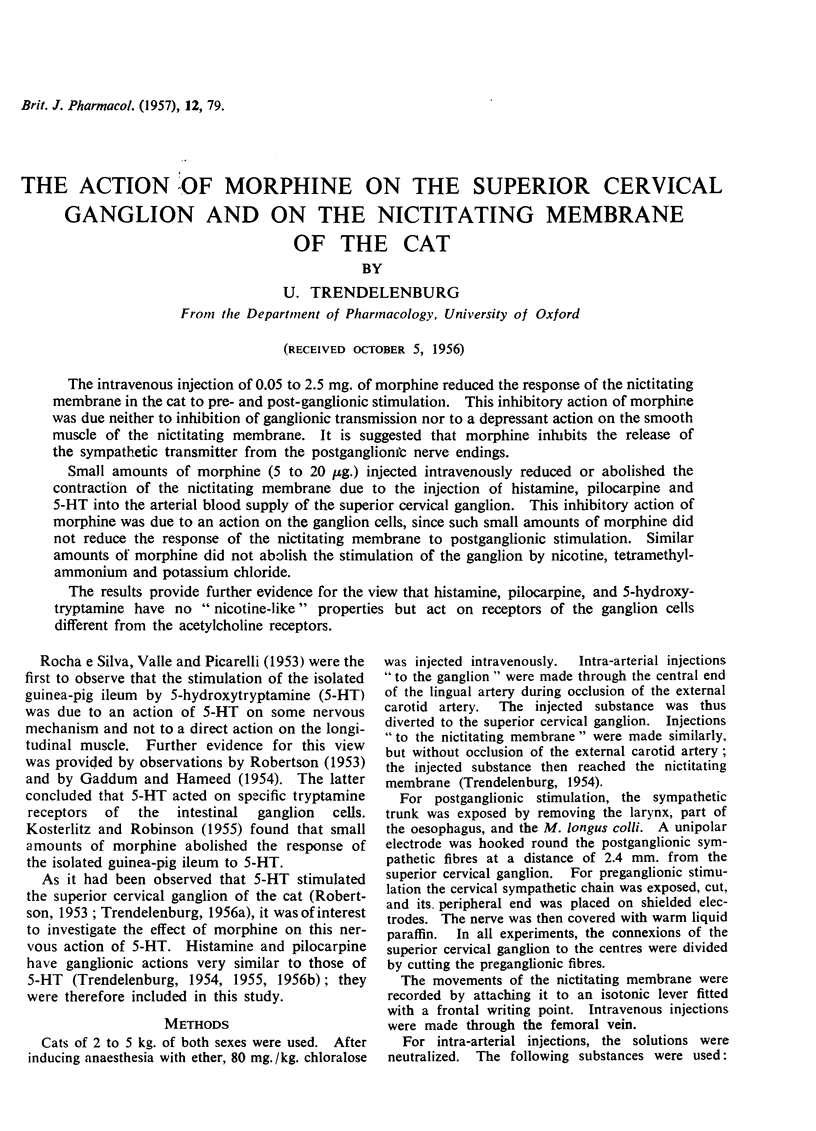
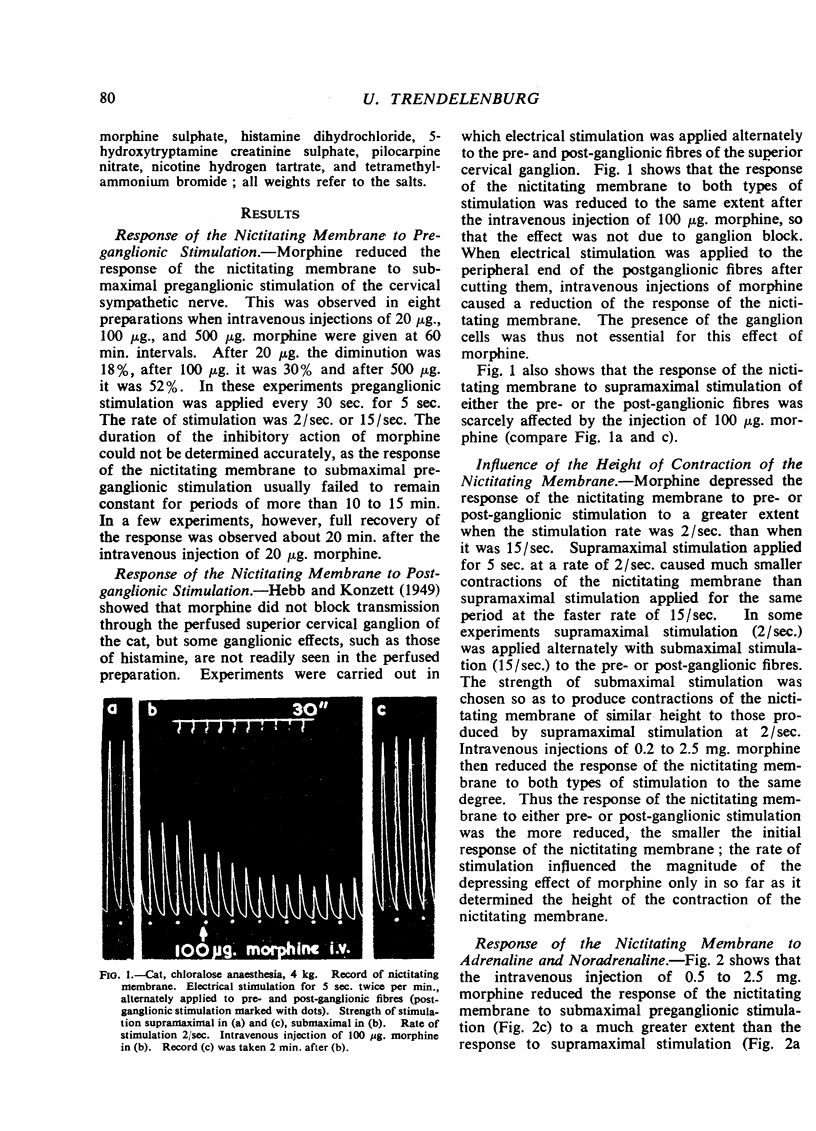


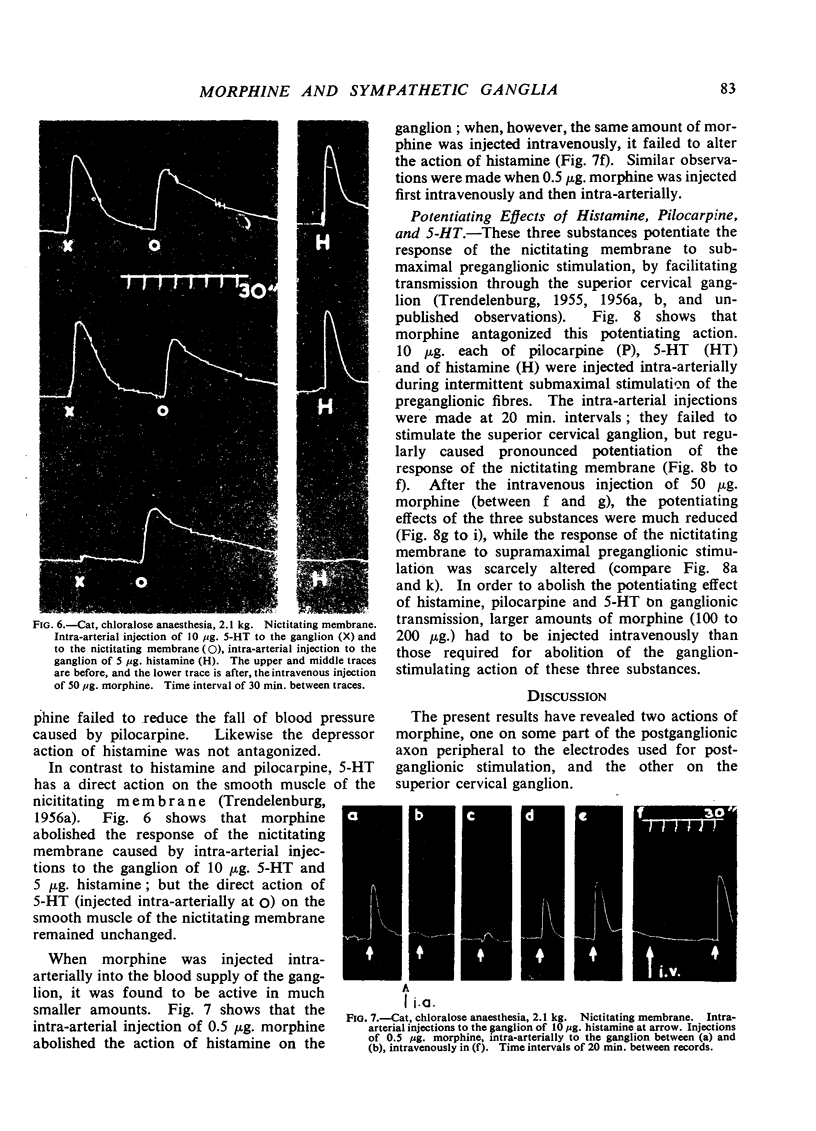
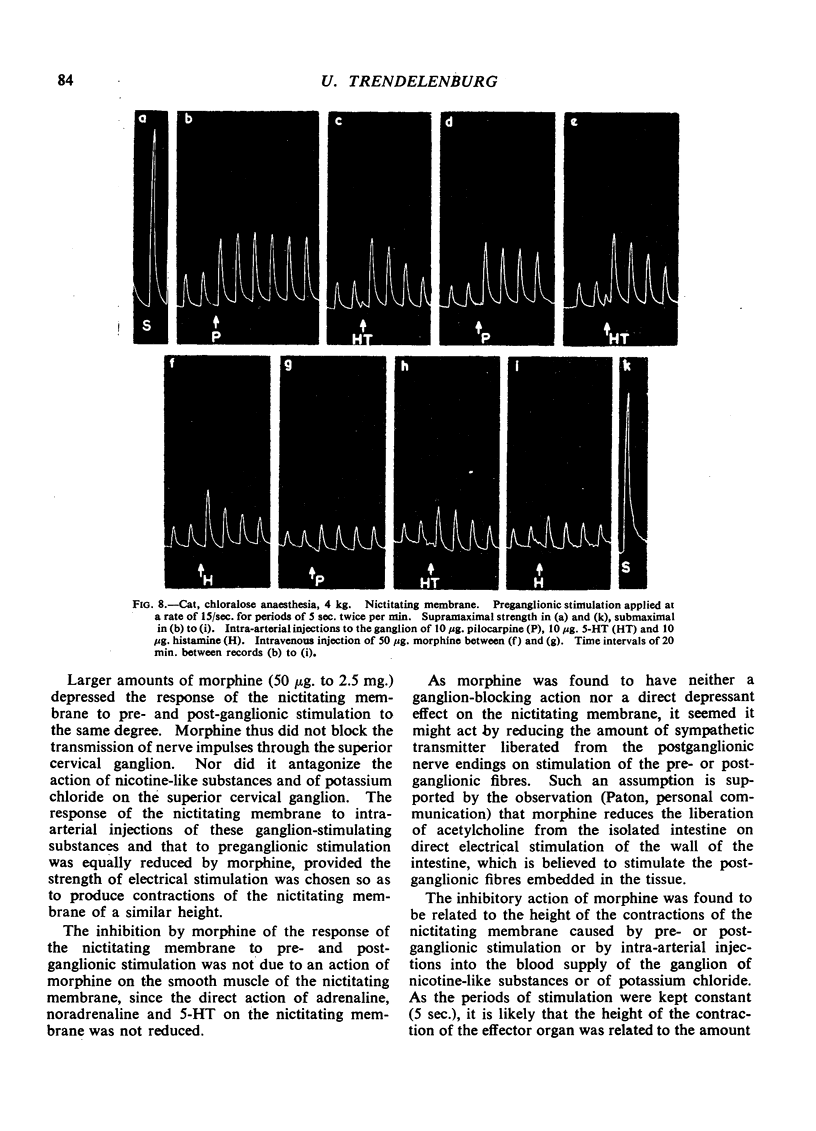
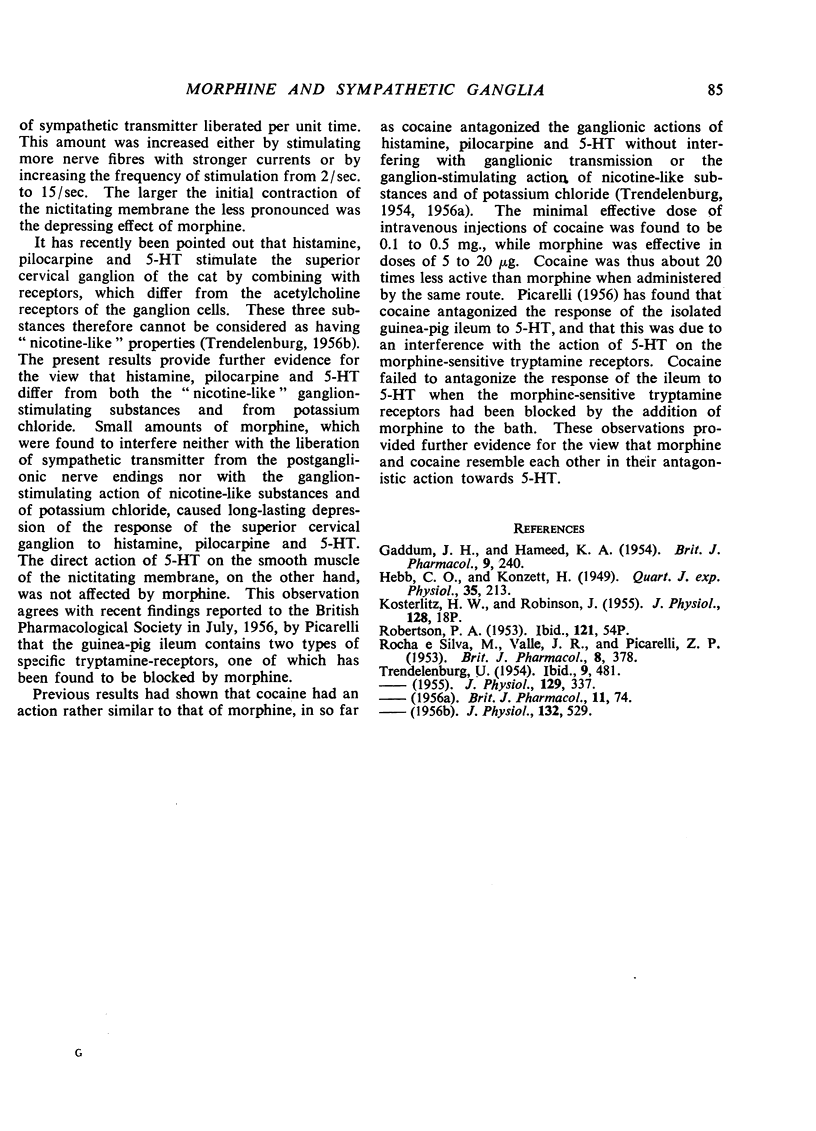
Selected References
These references are in PubMed. This may not be the complete list of references from this article.
- GADDUM J. H., HAMEED K. A. Drugs which antagonize 5-hydroxytryptamine. Br J Pharmacol Chemother. 1954 Jun;9(2):240–248. doi: 10.1111/j.1476-5381.1954.tb00848.x. [DOI] [PMC free article] [PubMed] [Google Scholar]
- HEBB C. O., KONZETT H. The effect of certain analgesic drugs on synaptic transmission as observed in the perfused superior cervical ganglion of the cat. Q J Exp Physiol Cogn Med Sci. 1949 Nov;35(3):213–217. doi: 10.1113/expphysiol.1949.sp000950. [DOI] [PubMed] [Google Scholar]
- KOSTERLITZ H. W., ROBINSON J. A. Mechanism of the contraction of the longitudinal muscle of the isolated guinea-pig ileum, caused by raising the pressure in the lumen. J Physiol. 1955 Jul 28;129(1):18–9P. [PubMed] [Google Scholar]
- ROBERTSON P. A. An antagonism of 5-hydroxytryptamine by atropine. J Physiol. 1953 Aug;121(2):54P–55P. [PubMed] [Google Scholar]
- ROCHA E SILVA M., VALLE J. R., PICARELLI P. A pharmacological analysis of the mode of action of serotonin (5-hydroxytryptamine) upon the guinea-pig ileum. Br J Pharmacol Chemother. 1953 Dec;8(4):378–388. doi: 10.1111/j.1476-5381.1953.tb01333.x. [DOI] [PMC free article] [PubMed] [Google Scholar]
- TRENDELENBURG U. The action of histamine and pilocarpine on the superior cervical ganglion and the adrenal glands of the cat. Br J Pharmacol Chemother. 1954 Dec;9(4):481–487. doi: 10.1111/j.1476-5381.1954.tb00865.x. [DOI] [PMC free article] [PubMed] [Google Scholar]


